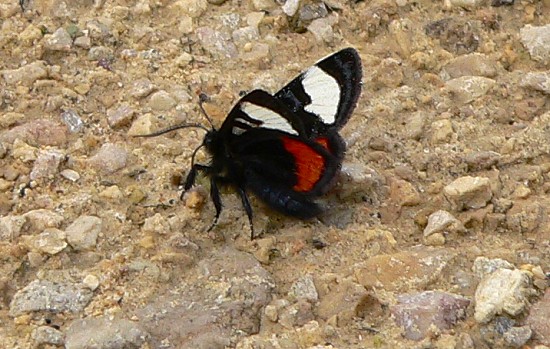I walked out to the wetland this evening, between rainstorms. The light was beautiful – sun was setting between the clouds and shining on the new green on the trees.
This is the prairie in our front yard, looking very wet and misty.
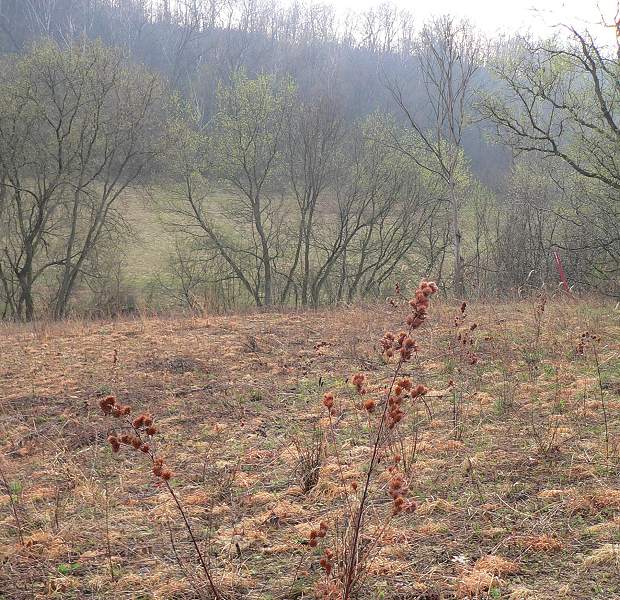
I heard and saw Common Snipe in the wetland for the first time. I’m sure they’ve been here all along, but I never realized what they were before. Tonight they were doing their mating displays – flying in huge circles over the wetland, twittering and calling.
The beavers have cut down all the willows on the north side of the creek so it’s much easier to get to their lake. I didn’t see any of the resident beavers or muskrats, but I did see lots of trout making ripples on the surface.
This is looking south over the beaver’s lake, with the dam on the right.
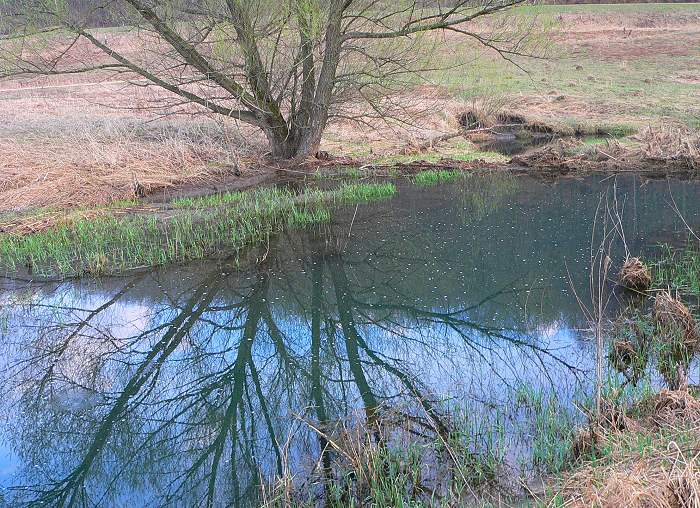
This is looking east over the lake.

As I was walking back to the house, I could see more rain clouds coming.
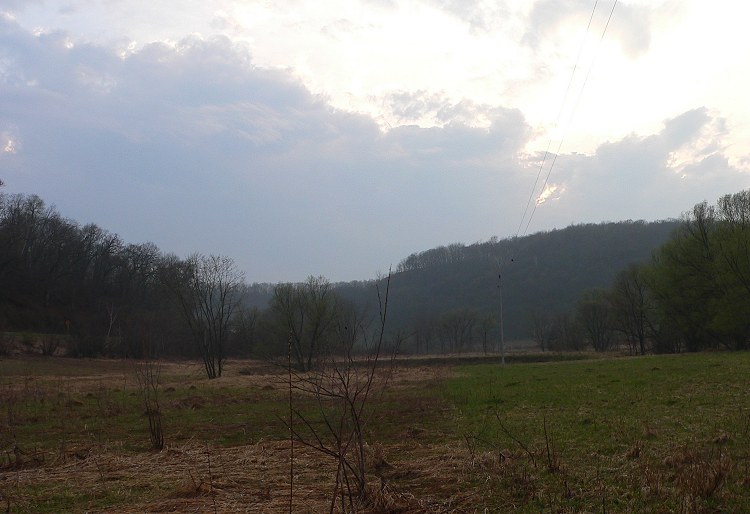
There are many more butterflies this week. I saw two Spring Azures, which spend the winter as pupas and hatch in the spring. And 4 or 5 American Painted Ladies laying eggs on Pussytoes (Antennaria sp.) and Everlasting(Gnaphalium obtusifolium). We also saw lots of Red Admirals. Painted Ladies and Red Admirals repopulate from the south every spring – they probably don’t survive the winters here. Some years we see hundreds and other years there are hardly any. This may be a big year for Red Admirals – we saw at least 10 this morning. I think they must have come with the strong south wind that’s been blowing for the last few days.
Red Admiral (Vanessa atalanta)

American Painted Lady (Vanessa virginiensis)

We’ve been working hard on Hidden Oaks Point this week – trying to get all the birches cut and cleared from the very tip of the point. We also cut and removed some old stumps from previous clearing projects. The point looks much more like savanna than it did when we started in 2002.
Here’s Mike with the biggest stump from one of the biggest birches we cut. The big trees are very hard to manage – it’s hard to tell where they’ll fall, and the pieces are heavy to carry. This trunk piece was so heavy that we couldn’t lift it – we had to roll it into the bucket of the Powertrac to take it away.
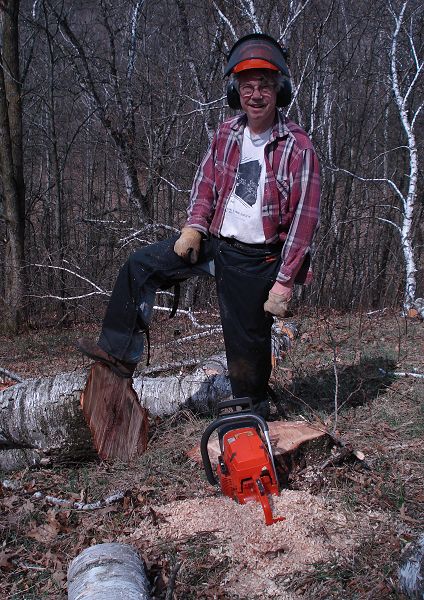
Here’s the view of the point from 3 Finger Valley as of this afternoon – after we finished working. Except for one clump of birches it’s clear all the way up to the top. Now we’ll start widening the cleared area until it’s all savanna on the south-facing parts of the point.
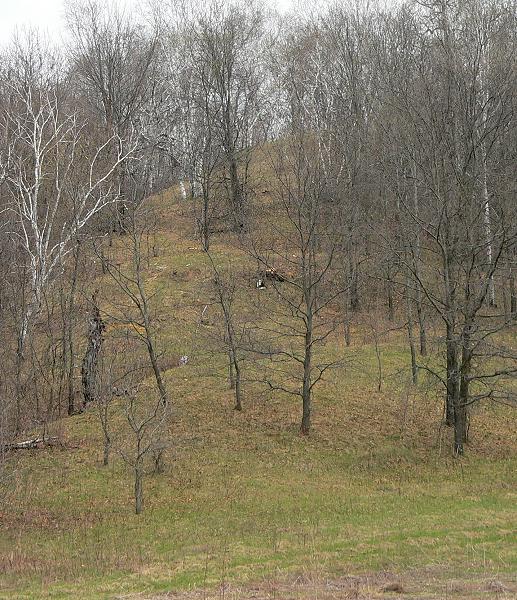
This is a photo from September 2002 showing the difference we’ve made.

Already our efforts have been paying off – we found Hoary Puccoon and Bird’s Foot Violet starting to bloom near the top of the point.
Bird’s Foot Violet (Viola pedata)
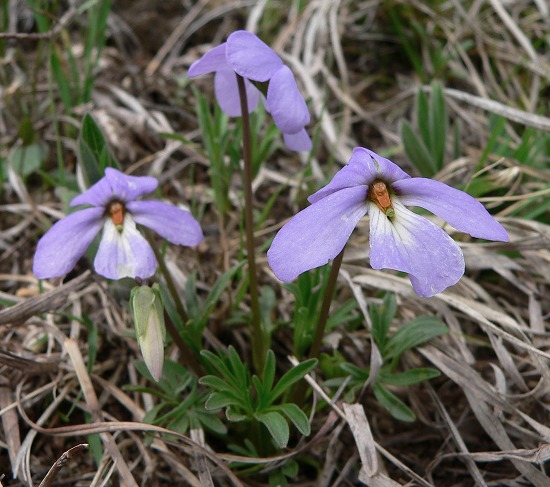
Hoary Puccoon (Lithospermum canescens)

I’ve been diligently searching for Garlic Mustard every spring. Garlic Mustard is an invasive weed that’s spreading rapidly in Wisconsin and Minnesota. It likes to live in forests, it spreads rapidly, and it has a chemical that spreads from its roots that kills other nearby plants. Within a few years of its establishment it becomes the dominant plant in the woods. I watched that happen on the Wisconsin side of the St. Croix River, across from our old cabin, and I don’t want to have it happen here. So every spring I walk all over our land looking for Garlic Mustard plants. I found one small patch along one of the old logging roads this winter. Yesterday I pulled all the plants I could find. I’ll have to keep checking to see that I really got all of them.
Garlic Mustard (Alliaria petiolata)
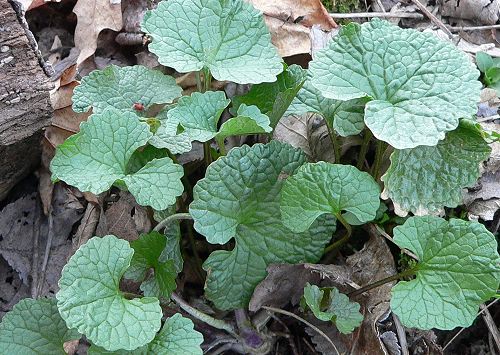
Bloodroot (Sanguinaria canadensis) is a common woodland spring-blooming flower here. We only have it in one small spot – next to the road in a sunny ditch surrounded by Reed Canary Grass. It’s a north-facing slope, and I’m sure it was a shady woodland before the road was built. But the Bloodroot hangs on in this unlikely place.
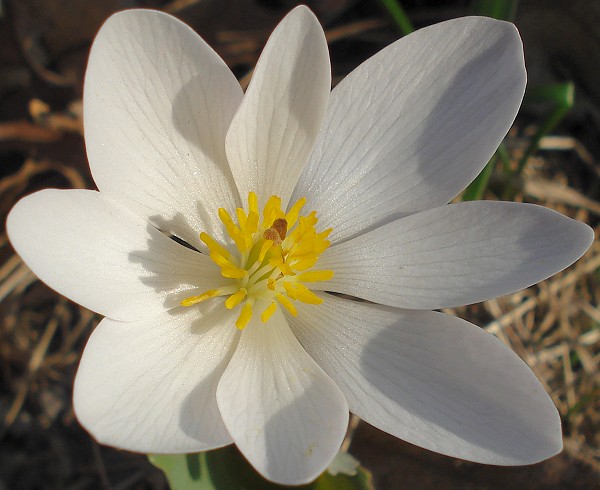
We don’t have very many of the spring woodland flowers – most of them grow in Maple-Basswood Forests but not in the kind of woods we have – Dry Oak Forest. We do have Rue Anemones, which are just starting to bloom.
Rue Anemone (Thalictrum thalictroides)
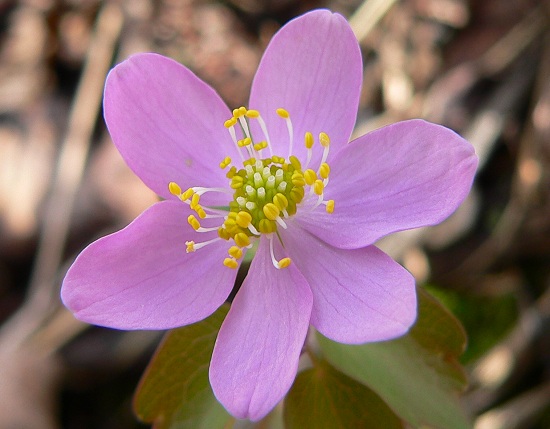
Here’s one of the Woodchucks that lives behind the house.
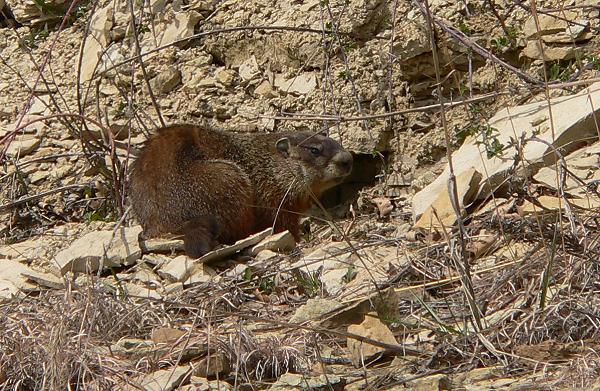
And here’s a beautiful little day-flying moth, a Grapevine Epimenis (Psychomorpha epimenis). Its caterpillars eat Wild Grape leaves.
